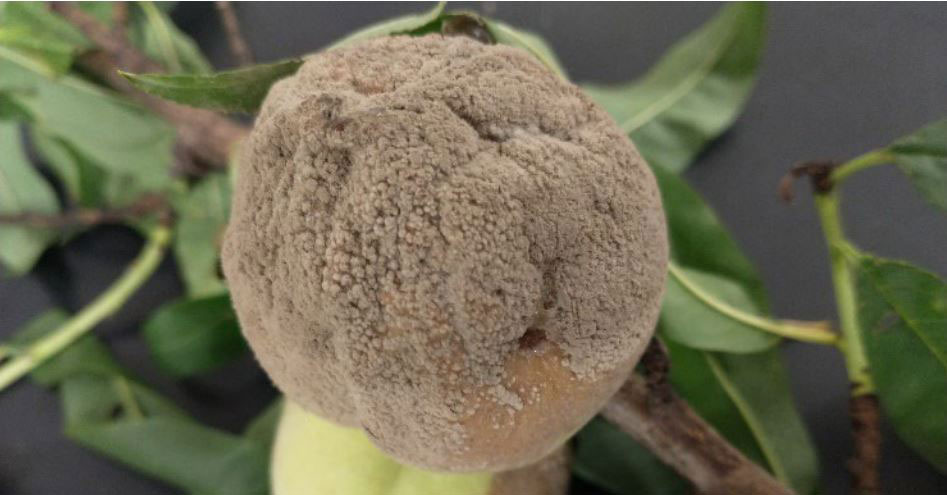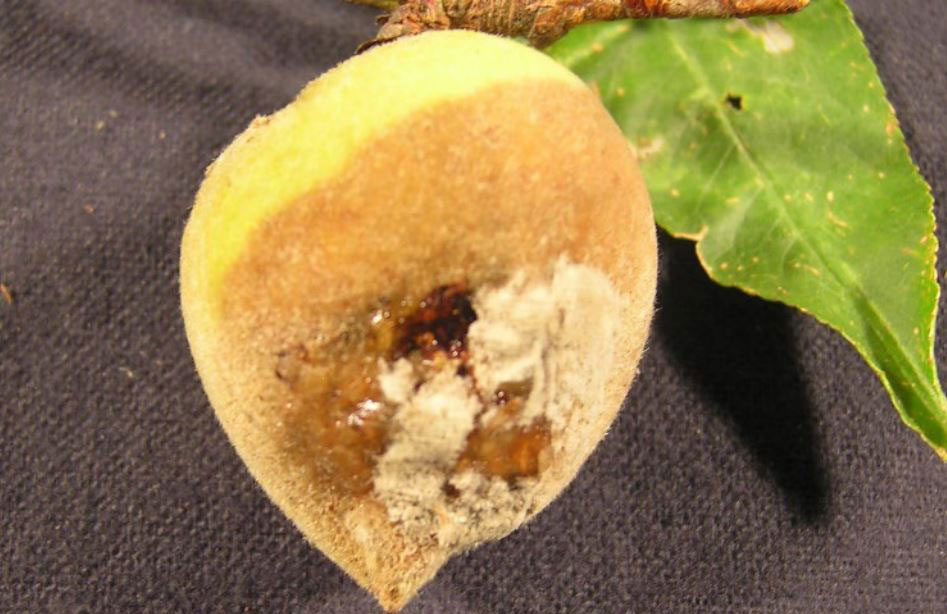Brown Rot of Peach/Nectarine/Plum
Contact
Plant Diagnostician
Phone: (479) 575-2727
Email: ssmith@uada.edu
Jason Pavel
Diagnostician
Phone: (479) 575-7257
Email: jpavel@uada.edu
Office:
University of Arkansas System Division of Agriculture
Cralley Warren Building
Room 16
2601 N. Young Ave.
Fayetteville, AR 72704
Brown Rot of Peach/Nectarine/Plum
Plant Health Clinic Disease Note Issue 19
Sherrie Smith and Jason Pavel

System Division of Agriculture.
Brown Rot is one of the most serious and pervasive fungal diseases of stone fruits. Brown rot attacks peaches, nectarines, apricots, cherries, and plums. Two species of Monilinia have been identified as causative agents in the United States: Monilinia fructicola, and M. laxa.
Symptoms
Monilinia causes twig and blossom blight in early spring. Flowers turn brown and become a gummy mass. The infection travels down and can girdle the twig. Lens-shaped lesions can form on branches and the trunk. The infected tissue becomes covered with grayish-tan spore mass that provides secondary inoculum for additional infections. Brown rot appears on ripening to mature fruit as a rapidly growing, firm brown decay. The fruit becomes covered with the grayish-tan spore masses and eventually mummifies on the tree. Immature fruit that is infected remains on the tree and mummify also.

System Division of Agriculture.
Prevention
Since Monilinia overwinters on mummified fruit, twigs, and cankers, sanitation is very important in the home orchard. However tedious a procedure, it is helpful to clean up as much infected tissue as possible. Homeowners may use Ortho Home Orchard Spray, or Bonide Fruit Tree Spray, or Hi-Yield Captan 50WP, or Bonide Captan 50WP, or Spectracide Immunox, or Bonide Fung-onil Multipurpose Fungicide Concentrate. Commercial growers may use Abound, or Quadris Top, or Topguard, or Pristine, or Captan, or Indar, or Eagle, or Fontelis, or Propimax, or Tilt, or Scala, or Gem, or Fontelis, Adament, or Ziram Granuflo. Timing of the first sprays is of the utmost importance. Begin at pink bud in the spring and follow label for repeat sprays.
Take Aways:
• Clean up all infected fruit and twigs.
• Begin fungicides at pink bud in the spring.
This work is supported by the Crop Protection and Pest Management Program [grant no. 2017-70006 27279/project accession no. 1013890] from the USDA National Institute of Food and Agriculture.
Follow us on Facebook!
UAEX Plant Health Clinic